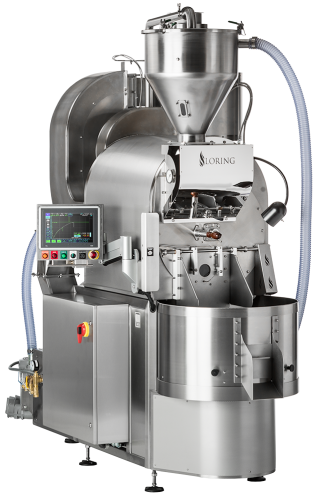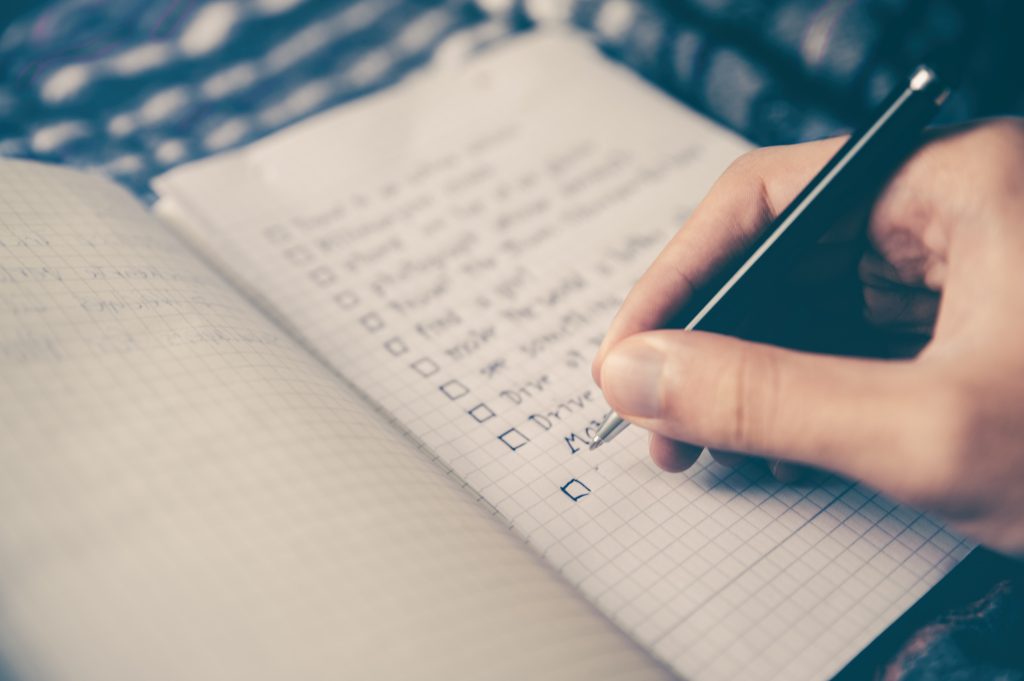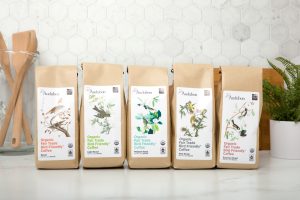

Our love of all things coffee permeates our lives! What began as an ecological endeavour to make certified Bird Friendly coffee available to our community, quickly took over our senses, our minds, and our hearts.
20 years ago, there was no roast-dated coffee and very few local roasters. Even the leaders in specialty coffee roasted their coffee centrally and it staled through long distribution chains. Commercial coffee was roasted to American roast and specialty coffee was dark. But it was the moment specialty coffee began to take off.
Hearing a CBC documentary about the devastation caused by monoculture sun grown coffee, we went out to purchase certified Bird Friendly coffee. But the only examples we could find were unroasted! Ugh! So, after 20 years as an IT consultant I was ready for a career shift, and I figured “How hard can it be to roast coffee?” And in the midst of that hubris and naivety, Birds and Beans was born.
Two decades later, we have converted our naivety to experience and our hubris to quality of product.
We were drawn to the Loring for the roast profiling, but we were sold on the environmental benefits! Its super efficient builtin afterburner is up to 80% more fuel efficient and emits virtually no particulates. Pair that with our use of Bullfrog gas and electricity and our roasting has the lowest environmental imprint possible.
~Madeleine
As newbie roasters we were lucky to meet a great coffee importer of FTO specialty coffee who carried several certified Bird Friendly selections. From them we learned that an importer with shared values is invaluable. Not only do they select and screen for quality coffee, but they have expertise in shipping. They know how to ensure the quality and certifications of the coffee survive enroute. And because they import by container loads the cost of shipping is minimized.
For our fist roaster we chose a drum roaster with a coffee profiling option. We attended the roasting course offered by the manufacturer. We came back with a good appreciation of how to use the roaster and the profiling system. But it was a bit like knowing how to write words and sentences without any idea what to write about! How do we design a roast profile for a coffee?
Fortunately there were a couple profiles provided as a starting point. So we dove in! Our fist batch of coffee tasted better than grocery store coffee on the first day! Woo hoo! But the next day it tasted like aspirin! Wha??!! Ok maybe this is going to be harder than we thought.
Learned from experience on day 1: Coffee really does need to degas for at least a day after roasting for flavour to develop… whether good or bad flavours!

Through a combination of trial and error and meticulous note keeping we iterated our way to some great roasts. We learned which of our coffees showed bolder flavours like earth and dark chocolate and which were milder and showed more flowery delicate flavours. While those around us were all roasting between dark to charcoal, we sought the “right” roast for each origin. We noticed that bold flavourful coffee did not have to be super dark.
We were using our lived experience and our senses to set our own way rather than following trends. Realizing the incredible importance of freshness, we were the first company in Canada to roast date our coffee. We noticed some coffees roasted hotter did not necessarily look as dark and oily, so we labeled our coffees bold and mild instead of dark and light… a practice we continue today… but one that has not caught on like roast-dating did. 😉

The above shows the time-temperature curves of 2 roasts of the same coffee on the same day. They both have the same end temperature but they take a different path over time. During the development part of the roast they differ by about 5 degrees F They tasted quite different. The one on the lower curve was much more flavourful and dynamic!
~ Madeleine

We noticed that tiny changes to the roast profile could have huge changes in the final product. It turns out that a coffee roasted to the same final temperature, but that has a different time temperature path along the way, can be the difference between ambrosia and bitter swill.
About 10 years in, we purchased the Loring Smart Roast Kestrel. It was the perfect roaster for us! In addition to its environmental benefits, it and gave us the platform to go to the next level with our roast profiles. Loring was re-writing their profiling software during that time and we worked with them as alpha testers.
The profile system on the Loring along with its closed air recirculation system provided mind blowing control and we were ready for it!
We built a set of tools for profile development and refinement. We graph the bean temperature of an experiment and compare with the production roast, taste them side by side. We use our own proprietary tasting guide that adds many aspects to traditional tasting forms like the of sip timing (approach through aftertaste) and the “goodness” of the cup from hot to cool. We often use musical analogies like “wall of sound” when the flavours are difficult to separate and the flavour ‘chord’ indicating the presence of light & delicate aspects to bold and deep character. We’ll graph them so we can remember the intensity of each. And we keep an electronic record of our tasting experience for future reference.
The detailed electronic records of tasting combined with the bean temperature graphs has proved highly effective in improving our roasts over the years! After 20 years, we have tasting records and graphs of 20 crop year changes over dozens of origins. This gives us a lot of insight!
Perhaps most importantly, it has developed our shared vocabulary in describing what we find. Like in learning to distinguish the individual instruments when an ensemble is playing, the notes in coffee can be similarly distinguished. And years of practice allow ever more and more subtle probing.

If all of this sounds like hooey to you, or like work, you can still enjoy the coffee! Most of us enjoy music without being a music expert. Hopefully you will be moved to say “Wow! That is a good cup of coffee!”

